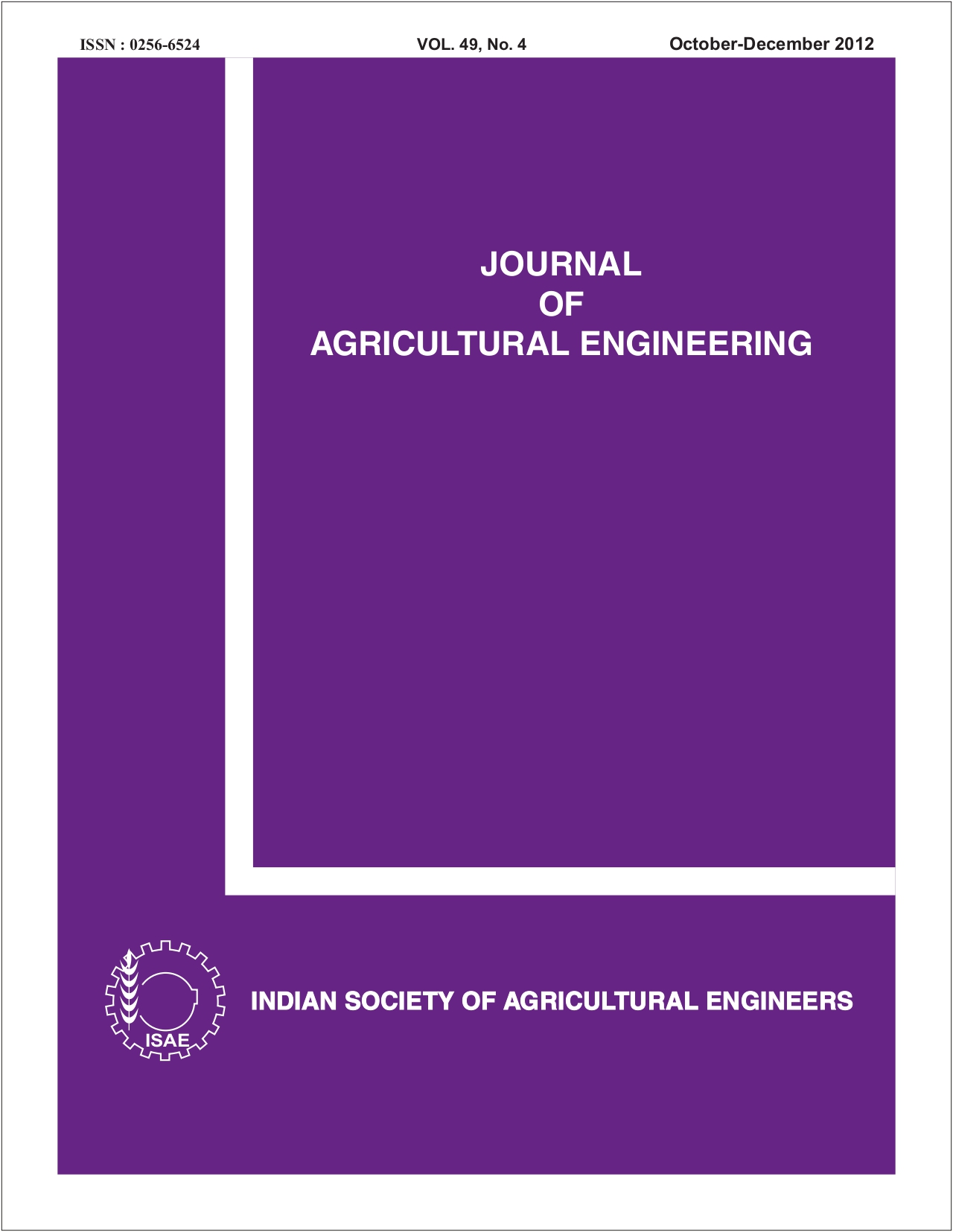Performance of Geo-synthetic Filter Materials as Drain Envelope in Land Reclamation in Haryana
DOI:
https://doi.org/10.52151/jae2012494.1490Keywords:
Envelope, envelope wrapping machine, geo-synthetic envelope, subsurface drainage, woven synthetic envelopeAbstract
Geo-synthetic envelope materials are increasingly replacing gravel/sand in subsurface drainage systems commonly installed to reclaim waterlogged salt affected lands. The availability constraints of gravel/sand envelopes, transport cost, design complexities, application difficulties in mechanized construction helped the switchover to synthetic envelopes, especially geo-synthetic materials. Geo-synthetic envelope materials used in Haryana Operational Research Project (HOPP) were found to be strong enough to withstand handling during transport, manual or machine wrapping, and for use with a drainage pipe laying machine. These materials were tested in the laboratory to characterize them and recommend their use as envelope materials. The field data after 3 and 6 years of installation of the drainage system at Jhajjar in Haryana with geo-synthetic envelope materials revealed much less silting of pipes than the recommended guidelines. The characteristics of a woven synthetic material used to wrap perforated collector pipes are discussed. A machine earlier designed to wrap the geo-synthetic material was evaluated for its capacity. The machine could handle 1.5-2.0 km of pipe daily with 8 semi-skilled labourers, enabling to cope up with the demand of a pipe-laying trencher machine that could lay about 1.5 km of laterals in a single day.
References
Anon. 2002. Recommendations on Water Logging and Salinity Control Based on Pilot Area Drainage Research. CSSRI, Karnal and ALTERRA-ILRI, Wageningen, pp: 100.
ASTM D 4751-95. 1995. Standard Test Method for Determining Apparent Opening Size of a Geotextile. In: ASTM 1996C: 720-724, American Society for Testing and Materials, Philadelphia.
BIS. 1992. Determination of Thickness at Specified Pressures. IS 13162 (Part 3), Bureau of Indian Standards, Manak Bhawan, New Delhi.
Cavelaars J C; Vlotman, W F; Spoor G. 1994. Subsurface drainage systems. In: Drainage Principles and Applications, ILRI Publication, Second Edition, 827-929.
Gupta S K. 2002. Future prospects of subsurface drainage in India. J. Water Manage., 10, 49-57.
Lagace R; Skaggs R W. 1982. Prediction of drain silting and filter requirement criteria. In: Proc. 2nd Int. Drainage Workshop, Washington, D.C. USA, December 5-11.
Mohan Lal; Arora V K; Gupta S K and Singh R V. 2006. Design considerations and guidelines for large-scale subsurface drainage projects using pipe-laying machine (Trencher) at farmer’s field. J. Water Manage., 14, 48-56.
Murty V V N. 1985. Land and Water Management Engineering. Kalyani Publishers, New Delhi, pp: 590.
Rao K V G K; Singh O P; Gupta R K; Kamra S K; Pandey R S; Kumbhare P S; Abrol I P. 1986. Drainage Investigations for Salinity Control in Haryana. Bull. 10. Central Soil Salinity Research Institute, Karnal, pp: 95.
Stuyt L C P M. 1992. Mineral clogging of wrapped subsurface drains installed in unstable soils: a field survey. In: Proc. 5th Int. Drainage Workshop, Lahore, Pakistan, February 8-15, III 5.50-5.60.
Stuyt L C P M; Diericks W; Martinez B J. 2005. Materials for Land Drainage Systems. FAO Irrigation and Drainage Paper 60 Rev. 1, Rome, Italy.
Vlotman W F; Willardson L S; Dierickx W. 2000. Envelope Design for Subsurface Drains. ILRI Publication No. 56. International Institute for Land Reclamation and Improvement, Wageningen, The Netherlands, pp: 358.














